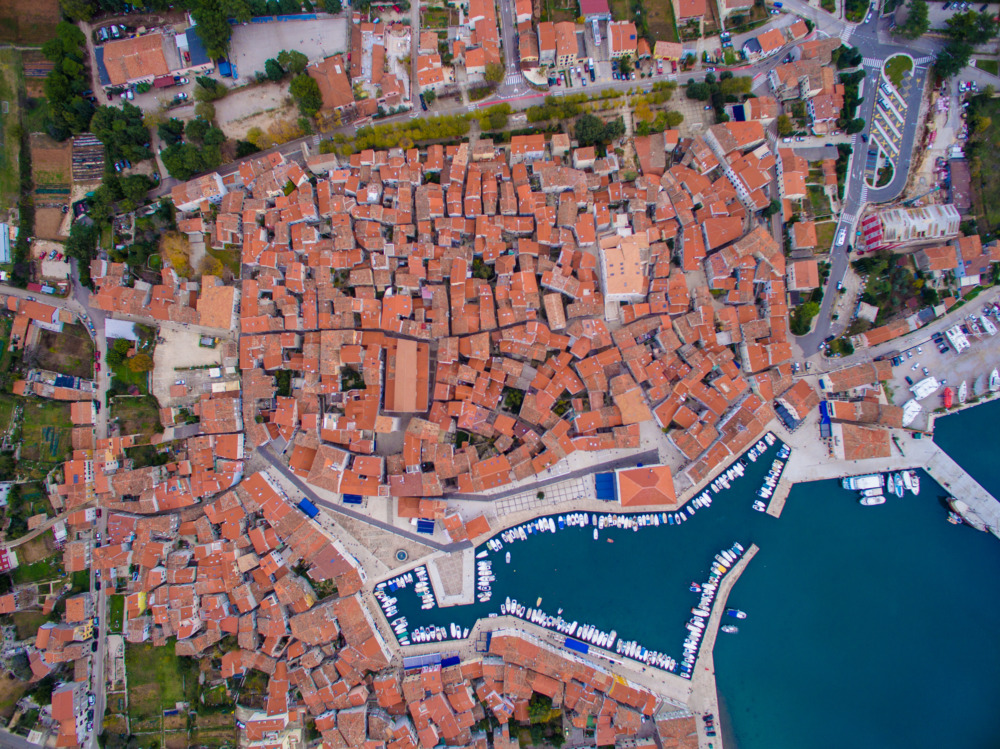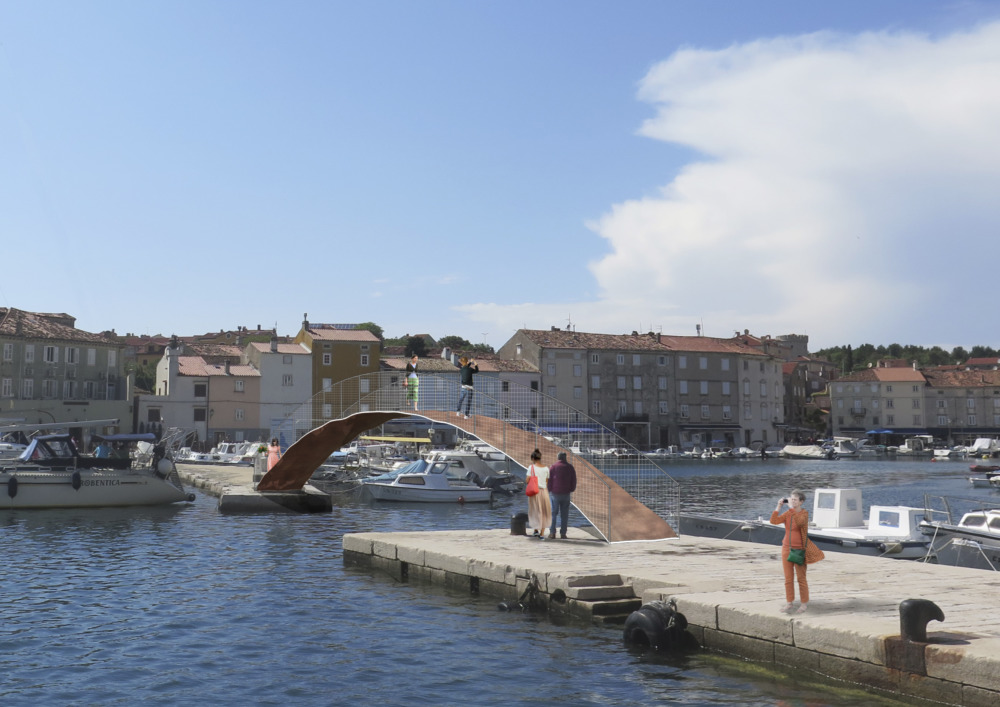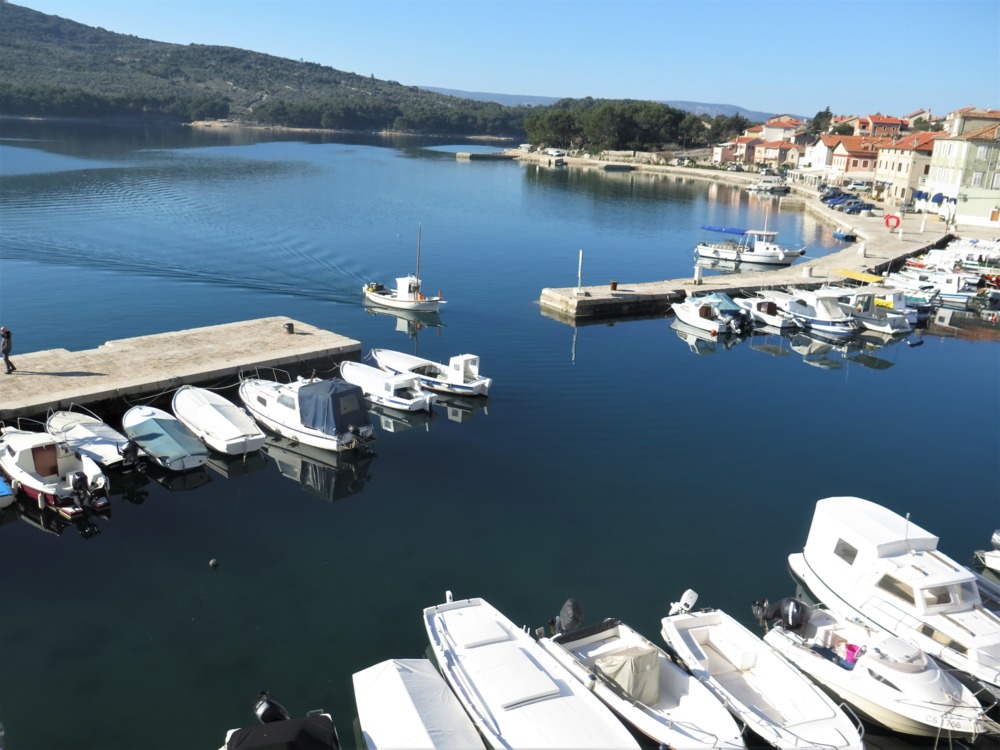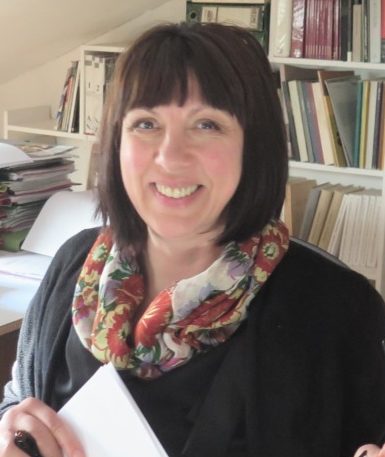Column
ColumnJapanese Bridge in Cres
The EPK Rijeka 2020 project opened the way for us to cooperate with the EU-Japan Fest and with Japanese artists. We started from the beginning, we researched public interference and the needs of the local community. We decided to ask the citizens of Cres what they would like to be built or have in their town. It turned out to be a pedestrian bridge that would connect the two piers at the entrance to the town harbor.
Namely, we conducted a survey and 95% of citizens opted for the bridge. Moreover, we offered to choose between the two bridges. The city of Cres supported us and we continued the project under their jurisdiction. We were supported by other institutions as well as the Ministry of Culture (Conservation Department).

Through the survey we found out the thoughts of the people of this island. For such a small and traditional environment, the response was great. While the older generation wanted a “Venetian” stone bridge, the younger generation was thrilled with the idea that the island would get a new, modern construction and that some new trends would make our island more modern and open to the future.
Two Japanese architects gave us their sketches. Through the survey, we asked citizens to express their opinions and comments. The opinion was also given by the institutions of the City as well as the Conservation Department in Rijeka. The decision fell on the Tetsuo Kondo pedestrian bridge because of its non-invasiveness and ease of construction.
Tetsuo Kondo proposes a bridge made of Corten material 5 centimeters thick and 18 meters long, which makes it fit perfectly visually into the arch.
It will be a light bridge that does not obscure the view or disturb the harmony of the city port. And the citizens chose the one designed by Tetsuo Kondo.
 Design of the bridge ©Tetsuo Kondo
Design of the bridge ©Tetsuo Kondo
The desire to build a bridge in Cres has existed for a long time, but only now the construction has been approved by the Ministry of Culture, Conservation Department, precisely because it is a modern Japanese architecture recognizable throughout the world. The modern construction will further emphasize the harmony and beauty of the medieval city and, hopefully, become a new tourist attraction on the island.
The citizens of our city are looking forward to this bridge because it would make life in the city easier. Cres is a small Mediterranean town of two thousand inhabitants, but during the summer that number multiply . Navigating through the city becomes difficult, it is crowded and access to the west coast is difficult.
Unfortunately, the situation with the COVID-19 epidemic has slowed and spoiled our plans. Covid disease has strongly affected the whole world, and especially our small island, which depends entirely on tourism. We could not count on funding from various institutions. Despite that, we hope that the so-called “Japanese bridge” will be built in Cres soon.
We thank you for the financial support for the design of the Tetsuo Kondo Bridge. The Bridge design means a lot to us because it is the first step in achieving our goal. Based on the finished design we can apply for various competitions.
 Location for the bridge
Location for the bridge
This phase represents the first phase and the first step in the realization and construction of the Japanese bridge in Cres. The design by architect Tetsuo Konda will now be presented to state and city Institutions such as the City of Cres, the County Port Authority, the Ministry of Culture, the Ministry of Transport and Maritime Affairs. Only together with them we can finish this project. The project started as one idea and started from the base, from the wishes of the people of the town of Cres and with the beautiful design of Tetsuo Kondo we continue to achieve the goal.
That bridge will bring new trends into one small and traditional scenery and blend the Mediterranean and modern Japanese architecture literally, but also symbolically.
Young people are leaving the island of Cres. It’s a small and sleepy community. People find it difficult to accept new ideas and it is this bridge that opens up a new perspective. We wanted to show people that old cities need to value their past and preserve it, but we need to move into the twenty-first century with new materials and new ideas. The bridge is a small step in achieving that goal, because the bridge will dominate the city and be recognizable and visually attractive. It would be the first modern construction in Cres and we are very much looking forward to the completion of this project.








